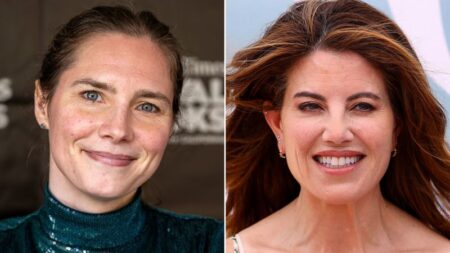The 2005 adaptation of Jane Austen’s “Pride and Prejudice,” directed by Joe Wright, is celebrated not just for its story but for its striking visual and emotional elements that enhance Austen’s original narrative. Among the most iconic moments in the film is the dramatic first proposal scene between Mr. Darcy and Elizabeth Bennet. This scene has become a hallmark of romantic cinema, captivating audiences with the intensity of its characters and setting. This proposal, drenched in rain, presents a stark contrast to its portrayal in Austen’s novel, which takes place in an enclosed, dry setting. Here, we see Mr. Darcy, played by Matthew Macfadyen, with his wet hair and soaked attire, passionately professing his love: “I love you, most ardently.” Despite the emotion displayed, Elizabeth Bennet, portrayed by Keira Knightley, resolutely rejects him, setting the stage for their tumultuous relationship throughout the film.
In juxtaposing this vivid cinematic interpretation to the original text, Wright’s film infuses the characters with deeper layers of emotional complexity. This cinematic version yields nuances that are only hinted at in the prose; while the original novel’s Darcy is often aloof and inscrutable, Macfadyen’s portrayal reveals a brooding and tortured soul marked by longing. The distinct portrayal of Mr. Darcy not only captivates the audience but allows them to invest emotionally in his journey, imbuing the character with an appeal that extends beyond the confines of the story. This portrayal lays the groundwork for the chemistry that becomes palpable throughout the film, audiences eagerly awaiting moments of tension and connection between Mr. Darcy and Elizabeth.
As Wright’s adaptation celebrates its 20th anniversary, it has been recognized as a significant cinematic achievement. With only a couple of notable adaptations to its name—most originally reimagined through the 1940 film featuring Greer Garson and Laurence Olivier—Wright’s interpretation succeeds where many modern takes falter, capturing the essence of Austen while spinning it in a way that resonates broadly. Although the 1995 Hong Kong miniseries starring Colin Firth was long considered the quintessential adaptation, many contemporary viewers now regard the 2005 film as a favorite, appreciating Wright’s ability to inject emotional depth into not just Darcy, but also Elizabeth and even supporting characters.
Scholar and Austen enthusiast Devoney Looser points out that while she remains partial to the 1995 miniseries, her students increasingly favor the 2005 film. This shift reflects how Wright’s cinematic language translates Austen’s intricate emotional landscapes into visual storytelling. The movie provides glimpses into Darcy’s inner turmoil, pulling viewers into moments that suggest an unsaid tension. A pivotal example occurs when Elizabeth visits her sister Jane at Netherfield, where Darcy’s gaze speaks volumes about his feelings, contrasting sharply with the book’s more detached narrative style.
Wright’s adaptation doesn’t merely skimp on exploring its characters’ internal lives; it extends this opportunity to others around them. For instance, Elizabeth’s sister Mary, portrayed by Talulah Riley, expresses longing and potential through her nuanced expressions during critical moments, evocatively fleshing out her backstory through smart cinematographic choices. These additional perspectives breathe life into the narrative, giving it a richness not fully realized in previous adaptations.
In a cultural landscape where audiences now view romantic stories with a more critical lens, the re-release of “Pride and Prejudice” offers a nostalgic escape. As theaters face challenges and romantic dramas are less common, the film serves as a reminder of the passionate, intimate connections that can arise amid the mundanity of life. Major themes of emotional investment and the raw nature of romance resonate deeply, inviting both old and new viewers to stay engaged, reflecting a familiar yearning for connections that transcend the digital age’s complexities.
Ultimately, Wright’s “Pride and Prejudice” embellishes Austen’s classic narrative with visual flair and emotional depth, breathing new life into the beloved story of Elizabeth and Darcy. The film’s continuing allure, even after two decades, affirms its status as not just a mere adaptation but a modern classic that will continue to resonate with audiences for years to come. As viewers revisit it in today’s world, they find reassurance in its story, remaining entranced by the delightful journey of love cluttered with societal constraints, personal growth, and, ultimately, the redemptive power of understanding.











